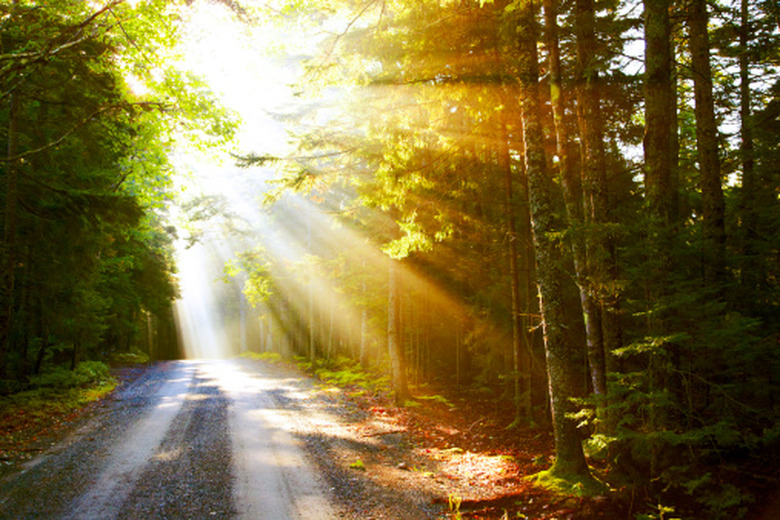What Are The Functions Of Carbohydrates In Plants?
Like all living organisms, plants require energy in chemical form so they can grow and carry out basic life functions. Plants produce, store and burn carbohydrates in the form of sugar to provide themselves with energy.
Photosynthesis
Photosynthesis
People and animals obtain their energy by consuming foods that contain carbohydrates. Plants, on the other hand, synthesize their own carbohydrates. Each green cell contains the machinery to harvest light energy and use that energy to break up carbon dioxide and water. The rearrangement of these molecules results in glucose, a carbohydrate.
Cellular Respiration
Cellular Respiration
Like other organisms, plants store carbohydrates and burn them for energy. This process, called cellular respiration, breaks down the carbohydrate molecules produced during photosynthesis, releasing energy to power the plant's life processes.
Food Source
Food Source
The considerable difference in how plants and animals generate energy is significant for all life on Earth. Without plants, the abundant energy beating down from the sun would go unused. When plants produce sugars from sunlight, they make those carbohydrates available to organisms that consume the plants as food. This forms the basis of the planet's food webs.
Cite This Article
MLA
Walls-Thumma, Dawn. "What Are The Functions Of Carbohydrates In Plants?" sciencing.com, https://www.sciencing.com/what-are-the-functions-of-carbohydrates-in-plants-12439954/. 21 July 2017.
APA
Walls-Thumma, Dawn. (2017, July 21). What Are The Functions Of Carbohydrates In Plants?. sciencing.com. Retrieved from https://www.sciencing.com/what-are-the-functions-of-carbohydrates-in-plants-12439954/
Chicago
Walls-Thumma, Dawn. What Are The Functions Of Carbohydrates In Plants? last modified March 24, 2022. https://www.sciencing.com/what-are-the-functions-of-carbohydrates-in-plants-12439954/
